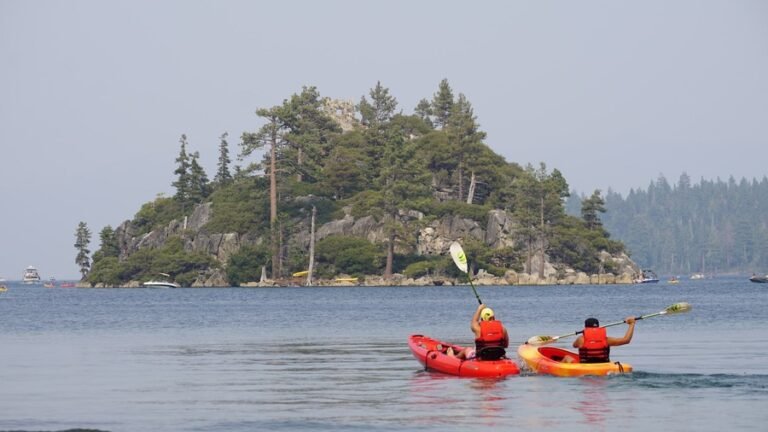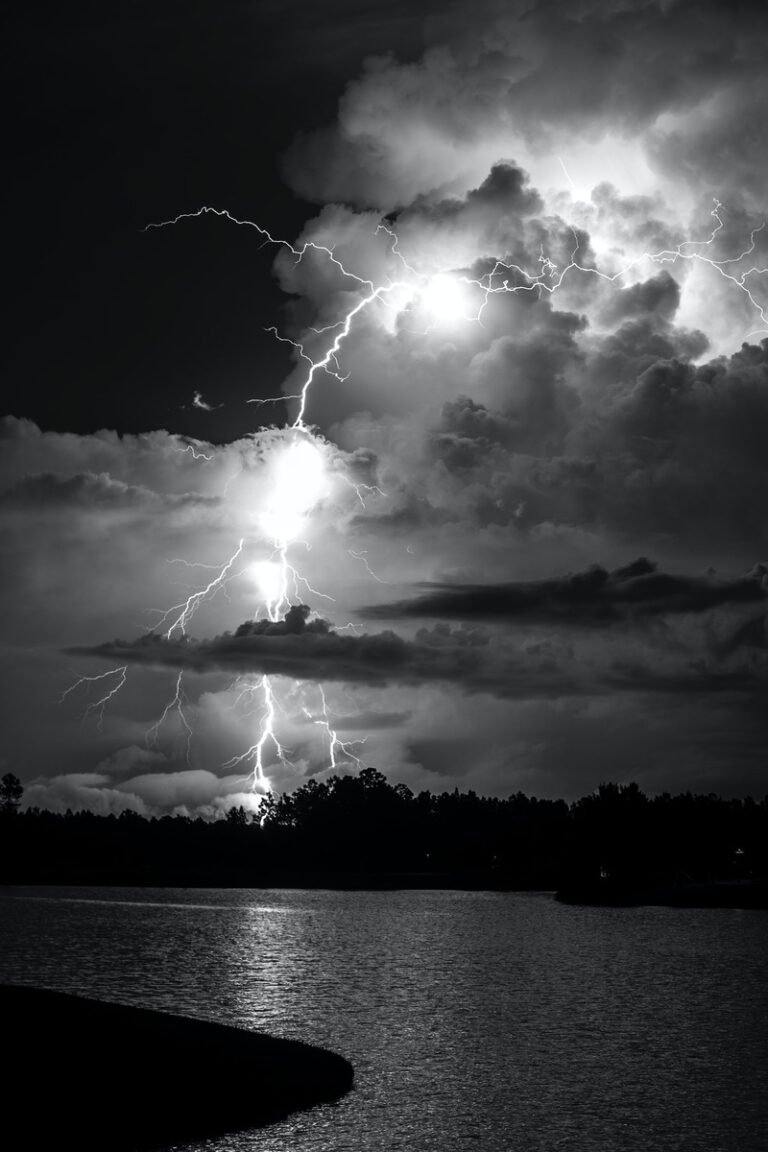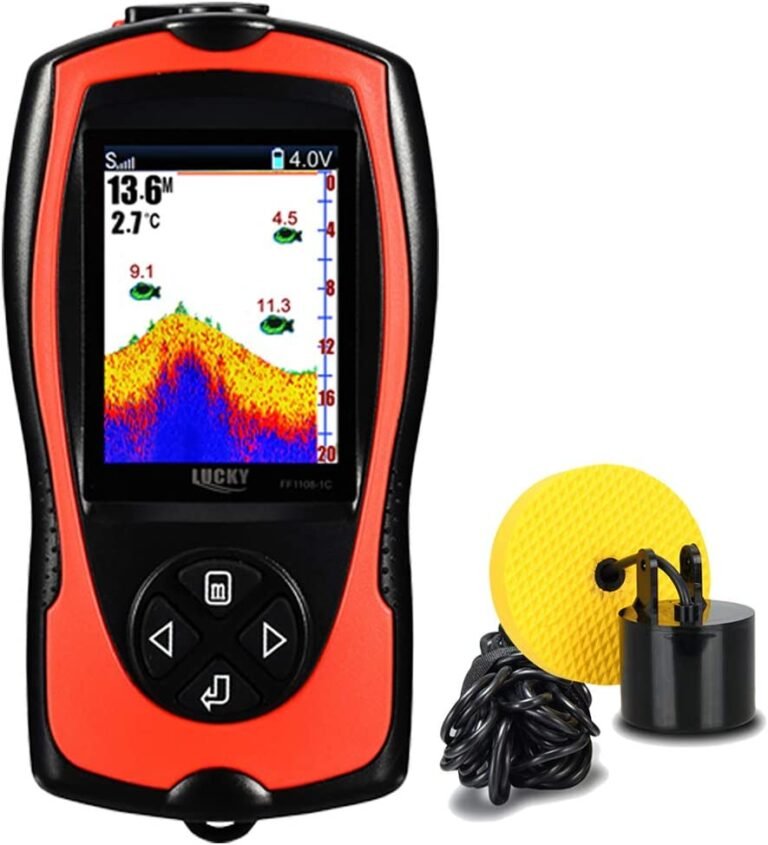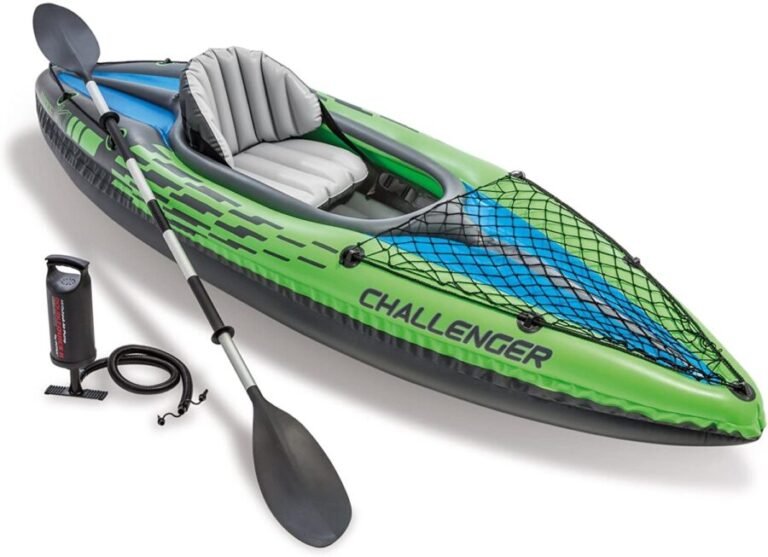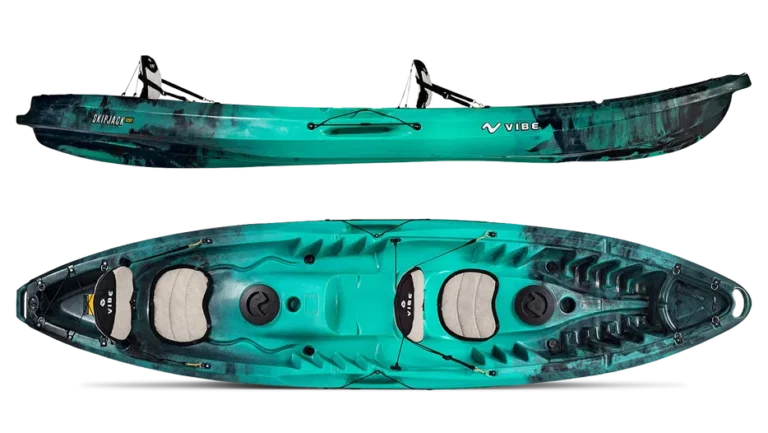Best Kayaking Food Ideas For Your Trip
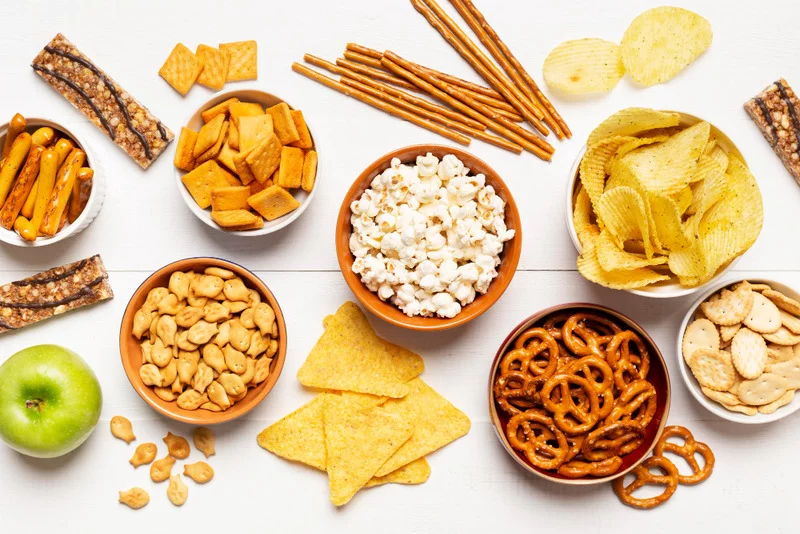
What Is The Best Food For Kayaking?
Kayaking isn’t just another recreational activity, it also happens to be an exciting adventure that allows you to become one with nature while challenging your physical and mental capabilities. To really enjoy your kayaking experience, it’s essential to nourish your body with the right type of food.
What’s the best food you might ask. The simple answer is, there isn’t a “one size fits all” answer. We’ll discuss different food categories and options, and you get to choose which you think is best.
Importance of Proper Nutrition While Kayaking
Kayaking demands a unique blend of strength, stamina, and agility. Whether you are embarking on a relaxing day trip or an adrenaline-pumping white-water kayaking session, your body needs to be in top shape.
Proper nutrition plays a pivotal role in achieving and maintaining peak physical performance during your time of kayaking.
Food Categories
To ensure you are well-prepared for your kayaking trip, we’re reviewing several food categories tailored to different phases of your prospective journey:
Pre-Kayaking Meals: Before hitting the water, it’s essential to fuel your body with the right nutrients to kickstart your adventure on the right paddle. Here are some pre-kayaking meal ideas:
- Complex Carbohydrates: Foods like oatmeal, whole-grain bread, and pasta provide sustained energy and help prevent fatigue. E.g. A bowl of oatmeal topped with berries and a drizzle of honey.
- Proteins: Lean protein sources such as eggs, yogurt, or tofu support muscle repair and growth. E.g. Spinach and mushroom omelette with a side of Greek yogurt.
- Hydration: Dehydration can sap your energy quickly, so don’t forget to drink plenty of water to stay well-hydrated.
Snacks for Sustained Energy: You’ll need snacks that are easy to carry and provide a quick energy boost for your trip. Consider these snack options:
- Trail Mix: A mix of nuts, dried fruits, and chocolate chips is a portable energy powerhouse. (Tip: Opt for a mix with a good balance of carbohydrates, fats, and protein)
- Energy Bars: Choose bars with a blend of carbohydrates and protein for a quick refuel during breaks. E.g. Peanut butter and chocolate chip energy bar.
On-Water Hydration: Dehydration can lead to cramps and a decrease in performance. Pack the necessary hydration items such as:
- Water: A classic choice, but ensure you have a reliable water bottle or hydration pack on hand.
- Electrolyte Drinks: These help replace electrolytes lost through sweat, especially on hot days or during strenuous paddling.
Post-Kayaking Recovery: After your fun time, your body needs nutrients that help it recover and get back in shape. Some ideas include:
- Protein-Rich Foods: Lean meats, fish, or plant-based proteins aid in muscle recovery. E.g. Grilled salmon with quinoa and steamed vegetables.
- Rehydrating Fruits: Fruits like watermelon and oranges are not only delicious but also help replenish lost fluids.
Adequate Preparation – Don’t Get Caught Off Guard
Understanding The Physical Demands That Come With Kayaking
It’s crucial to understand the physical demands that come with an activity such as this. Kayaking can be quite demanding bodily, and you need to ensure you are adequately prepared for the challenges that may be ahead.
Calories Burned: Kayaking is a full-body workout that engages your core, upper body, and lower body muscles. Depending on the intensity of your paddling and the duration of your trip, you can burn a significant amount of calories.
For instance, a moderate-paced kayaking trip can burn approximately 300 – 400 calories per hour, while more intense kayaking, such as whitewater paddling, can burn even more.
To keep your energy levels intact during your kayaking adventure, you’ll need to consume an adequate number of calories through your meals and snacks.
Hydration Needs: Paddling under the sun, surrounded by water, might make you underestimate the importance of hydration. However, kayaking can be physically demanding, and you’ll lose fluids through sweat.
Dehydration can lead to fatigue, cramps, and decreased performance. Ensure you have a reliable source of hydration, such as a water bottle or hydration pack. Electrolyte drinks can also be beneficial, particularly in hot weather or during intense paddling sessions.
Planning Your Meal Properly
Effective meal planning is one of the cornerstones of a successful kayaking adventure. It involves selecting the right foods, considering nutrient timing, and accommodating any dietary restrictions.
Balanced Diet: A balanced diet that includes carbohydrates, proteins, fats, vitamins, and minerals is essential for kayakers.
Carbohydrates provide the needed energy for paddling, proteins aid in muscle repair, and fats support overall body function. Fruits and vegetables provide essential vitamins and minerals.
Ensure your pre-kayaking and on-water snacks encompass a balance of these nutrients to keep you energized and nourished throughout your journey.
Nutrient Timing: Nutrient timing is crucial for maintaining energy levels and preventing fatigue. Here’s a general guideline for nutrient timing:
- Pre-Kayaking: Consume a balanced meal 1-2 hours before your trip to provide sustained energy.
- During Kayaking: Have easily accessible snacks to refuel and stay energized during breaks.
- Post-Kayaking: Opt for a balanced meal to aid in muscle recovery and replenish lost nutrients.
Dietary Restriction: If you have dietary restrictions or preferences, it’s important to plan accordingly. Vegetarians and vegans can find plant-based protein sources, while those with food allergies should carefully select snacks that are safe for consumption.
Packing The Essentials For Your Trip
When packing food for your kayaking adventure, consider the following factors to ensure your meals and snacks are convenient and safe to consume.
- Compactness and Portability: Choose foods that are easy to carry in a kayak, such as trail mix, energy bars, and dried fruits. Avoid bulky items that may take up too much space in your storage compartments.
- Lightweight Packaging: Opt for lightweight packaging to reduce the overall weight of your gear. Look for single-serving packets or resealable bags for snacks. This not only saves space but also minimizes waste.
- Insulated Containers: If you plan to bring perishables or hot beverages, invest in insulated containers. These will help keep your food fresh and at the right temperature throughout your journey.
Necessary Food Categories for Kayaking
Selecting the right food categories can make a significant difference in your energy levels, hydration, and overall enjoyment. Here are essential food categories that cater to the specific needs of kayakers.
High-Energy Snacks
- Trail Mixes: Trail mixes are a kayaker’s best friend when it comes to quick, high-energy snacks. They combine the goodness of nuts, dried fruits, and sometimes a touch of chocolate, providing a perfect balance of carbohydrates, healthy fats, and a hint of sweetness.
- Energy Bars: Energy bars are compact, easy to carry, and come in a variety of flavors. They’re designed to provide a quick energy boost and are packed with essential nutrients, making them an ideal choice.
- Dried Fruits: Dried fruits, such as apricots, dates, and figs, are lightweight and provide a concentrated source of natural sugars for quick energy. They’re also rich in vitamins and minerals.
- Nut Butter Packets: Individual nut butter packets, like almond or peanut butter, are convenient and rich in healthy fats and protein. Spread them on crackers or eat them straight from the packet for sustained energy.
Proper Hydration
Water: Water is the most fundamental element that should be in your to-pack list. Ensure you have a reliable water source with you.
Electrolyte Drinks: As stated earlier, electrolyte drinks help maintain the balance of essential minerals lost through sweating. Look for electrolyte tablets or powders that you can add to your water.
Coconut water is a natural source of electrolytes and is packed with potassium. It’s a refreshing and hydrating alternative to sports drinks.
Quick and Nutrient-Rich Meals
- Sandwiches/Wraps: Sandwiches or wraps filled with lean protein, vegetables, and whole grains are easy to prepare and consume during breaks.
- Dehydrated Backpacking Meals: Dehydrated backpacking meals are lightweight, require minimal preparation, and come in a variety of flavors. Just add hot water, and you have a good meal to refuel on.
- Rice and Grain Bowls: Pre-cooked rice or grains mixed with vegetables and a protein source make for a quick and nutritious meal. Consider adding some soy sauce or hot sauce for extra flavor.
- Pasta Salads: Cold pasta salads with veggies, a protein source, and a tasty dressing can be satisfying and refreshing. They can be prepared in advance and stored in an insulated container.
Fresh Foods
- Fruits: Fresh fruits such as apples, oranges, and grapes are hydrating and provide essential vitamins and minerals. Go for fruits that are easy to slice or bite into.
- Vegetables: Vegetables such as carrots, cucumbers, and bell peppers make for crunchy and refreshing snacks. They also add a dose of vitamins and fiber to your diet.
- Slicing Techniques: Pre-slice your fruits and vegetables at home to make them easy to eat on the water. Consider using a small, foldable knife or a multi-tool for convenience.
- Storing Fresh Produce: Store fresh produce in a separate dry bag or cooler with ice packs to keep them crisp and safe to eat.
The Right Proteins for Sustained Energy
- Jerky: Beef or turkey jerky is a protein-packed, non-perishable snack that provides sustained energy.
- Canned Fish: Canned tuna or salmon is a versatile protein source that can be added to sandwiches, wraps, or salads.
- Tofu or Tempeh: For vegetarian kayakers, tofu or tempeh can be marinated and cooked ahead of time for a protein-rich addition to your meals.
Treats and Indulgences
- Chocolate: Small pieces of dark chocolate or chocolate-covered nuts can be a delightful treat, providing a quick energy boost and a taste of indulgence.
- Gummy Bears: Gummy bears or other gummy candies can provide a burst of sugary energy when you need a quick pick-me-up.
- S’mores Ingredients: If you plan to camp during your kayaking adventure, consider bringing the ingredients for s’mores – marshmallows, chocolate, and graham crackers. It’s a fun way to end the day by the campfire.
- Tea or Coffee: A thermos of your favorite hot tea or coffee can provide comfort and a caffeine kick when needed. Just ensure it’s well-sealed to prevent spills.
Hydration Tips
Proper hydration is a non-negotiable aspect of any kayaking adventure. For this aspect, we’ll be getting into the importance of staying hydrated, methods for water purification, monitoring fluid intake, and how to avoid dehydration symptoms.
Importance of Staying Hydrated
Staying hydrated while kayaking is not merely a matter of comfort; it’s a fundamental element of your safety and performance. Here’s why hydration is crucial:
- Performance: Dehydration can lead to fatigue, decreased endurance, and reduced mental alertness, all of which can hinder your kayaking experience.
- Safety: In extreme cases, severe dehydration can result in heat exhaustion or heat stroke, which can be life-threatening. Proper hydration helps regulate your body temperature and prevents these risks.
- Physical Function: Hydration is essential for the proper function of muscles and joints. It also aids digestion and nutrient absorption.
Water Purification Methods
When kayaking, access to clean and safe drinking water may be limited, therefore, it’s essential to know how to purify water from natural sources. Some common methods include:
- Filtration Systems: Portable water filtration systems are effective at removing bacteria, protozoa, and particulates from water sources. They are lightweight and easy to use, making them a popular choice for kayakers.
- Chemical Purification: Water purification tablets or drops containing chlorine dioxide or iodine can be added to untreated water to kill harmful microorganisms.
- Boiling Water: Boiling water is one of the most reliable methods of killing bacteria and viruses.
Monitoring Fluid Intake
It’s essential to maintain a balance between fluid intake and output while kayaking. Here’s how to monitor your fluid intake effectively:
- Regular Sips: Take small sips of water consistently throughout your journey, rather than drinking large amounts at once. This helps prevent overhydration and frequent bathroom breaks.
- Hydration System: Consider using a hydration bladder or pack with a hose for easy access to water.
- Scheduled Breaks: Plan designated breaks during your trip to rehydrate and assess your fluid needs.
Dehydration Symptoms and How To Avoid Dehydration
Recognizing the early signs of dehydration is crucial for your safety. Be vigilant for symptoms such as:
- Thirst: Feeling thirsty is your body’s way of signaling the need for fluids. Don’t ignore it; take a sip of water as soon as you feel thirsty.
- Dark Urine: Dark yellow urine is a sign of dehydration. Aim for light, pale-colored urine as an indicator of proper hydration.
- Dry Mouth and Skin: Dry or sticky mouth, as well as dry skin, can indicate dehydration. Moisturize your lips and skin as needed.
- Fatigue: Excessive fatigue, dizziness, or lightheadedness can be signs of dehydration. If you experience these symptoms, stop paddling, find shade, and hydrate immediately.
- Headache: Dehydration can cause headaches. If you develop a headache during your kayaking trip, take a break and drink water.
Meal Planning and Food Safety
Portion Control
Effective portion control is key to ensuring you have enough food without carrying excess weight. Here’s how to manage portion sizes:
- Pre-packaged Portions: Divide snacks and meals into individual, pre-packaged servings. This not only prevents overeating but also makes it easier to distribute food evenly among your group.
- Calorie Considerations: Estimate the calories you’ll burn during your kayaking trip and plan your food accordingly. Remember that paddling intensity, duration, and environmental factors can affect calorie expenditure.
Allergies and Dietary Restrictions
Accounting for allergies and dietary restrictions is essential to keep all kayakers safe and comfortable. Here are a few things to consider:
- Allergen-Free Options: If someone in your group has allergies, opt for allergen-free snacks and meals. Read labels carefully to identify potential allergens.
- Vegetarian and Vegan Options: Include plant-based options to accommodate vegetarian and vegan dietary preferences.
- Gluten-Free Choices: Choose gluten-free products for individuals with gluten sensitivities or celiac disease.
Environmental Considerations
Responsible kayakers are mindful of the environment they explore. Here are some environmental considerations to keep in mind while kayaking:
Leave No Trace Principles: Follow Leave No Trace principles to minimize your impact on natural areas:
- Pack It In, Pack It Out: Bring trash bags to collect all waste, including food wrappers and leftovers, and dispose of them properly when you reach designated waste disposal areas.
- Minimize Campfire Impact: If you plan to camp, use a camp stove for cooking instead of creating open fires, which can damage the environment.
Proper Disposal of Waste: Dispose of waste thoughtfully:
- Biodegradable Soap: Use biodegradable soap for cleaning dishes and utensils. Scatter gray water at least 200 feet away from lakes and streams.
- Human Waste: If camping, follow Leave No Trace guidelines for human waste disposal. Use a portable toilet or dig a cat hole at least 200 feet from water sources.
Food Safety Tips
Ensuring food safety is crucial to prevent foodborne illnesses during your adventure. Follow these essential food safety tips:
- Temperature Control
- Coolers: If you’re carrying perishable items, use a well-insulated cooler with ice packs to keep food at safe temperatures. Monitor the cooler’s temperature to ensure it stays below 40°F (4°C).
- Hot Foods: Keep hot foods hot by using insulated containers or thermoses. Ensure hot foods are heated to a safe temperature before packing.
- Avoiding Cross-Contamination
- Separate Cutting Boards: If preparing food on-site, use separate cutting boards for raw meats and vegetables to prevent cross-contamination.
- Hand Sanitization: Practice good hand hygiene by washing hands with soap and water or using hand sanitizer before handling food.
- Proper Storage
- Dry Bags: Use dry bags to store food and prevent water damage. Double-bagging with zip-top plastic bags adds an extra layer of protection.
- Food Containers: Invest in airtight food containers to keep snacks fresh and prevent them from getting crushed during your trip.
Effective Cooking Methods
You have several cooking methods at your disposal. Let us dive into some, of which include campfire cooking, portable stove options, and convenient no-cook meal ideas.
Campfire Cooking
Safety Measures: Campfire cooking can add a delightful element to your kayaking adventure, but safety should always be the top priority:
- Fire Regulations: Check local fire regulations and guidelines for the area you’ll be paddling in. Some regions may have restrictions on open fires.
- Fire Pit: If you’re allowed to have a fire, use a designated fire pit if available. If not, create a small fire ring away from flammable materials.
- Extinguishing Tools: Carry a fire extinguisher, a bucket of water, or sand to extinguish the fire when you’re done cooking.
Cooking Equipment
- Grate or grill: Use a portable grate or grill for cooking over the campfire. Ensure it’s stable and secure.
- Cookware: Bring lightweight cookware, such as a camping pot, for boiling water or cooking meals. Non-stick pans can make cooking and cleanup easier.
- Fireproof Utensils: Use heat-resistant utensils like metal tongs or spatulas to handle food over the fire.
Recipe Ideas: Campfire cooking offers endless culinary possibilities. Here are some recipe ideas:
- Foil Packets: Wrap vegetables, protein (e.g., chicken or fish), and seasonings in aluminum foil. Cook them over the campfire for a tasty and easy meal.
- Skewers: Thread marinated meat or vegetables onto skewers for delicious kebabs.
- Campfire Pizza: Use pre-made pizza dough, sauce, cheese, and your favorite toppings to create campfire pizzas in a cast-iron skillet.
Portable Stoves
Types of Stoves: Portable stoves are a versatile and convenient option for kayakers. Consider the following types:
- Canister Stove: These stoves use canisters filled with pressurized fuel. They are lightweight and easy to use, making them a popular choice.
- Liquid Fuel Stove: Liquid fuel stoves, like white gas stoves, are reliable and perform well in extreme conditions. They are more suitable for longer trips.
- Alcohol Stove: Alcohol stoves are lightweight and environmentally friendly. They use denatured alcohol as fuel and are a simple and cost-effective choice.
Cooking Techniques: Portable stoves allow for precise temperature control, making various cooking techniques possible:
- Boiling: Use your stove to quickly boil water for dehydrated meals, pasta, or hot beverages.
- Simmering: Achieve low, steady heat for simmering soups, stews, or sauces.
- Frying: Cook up a delicious breakfast of eggs and bacon or sauté vegetables in a pan.
No-Cook Options
Some people may prefer to go the no-cook route, saving time and effort. Here are some no-cook meal ideas:
- Cold Salads
- Quinoa Salad: Combine pre-cooked quinoa with chopped vegetables, canned beans, and a flavorful dressing for a nutritious and refreshing salad.
- Pasta Salad: Mix cooked pasta with diced tomatoes, olives, mozzarella cheese, and Italian dressing for a satisfying cold pasta salad.
- No-Bake Energy Bites
- Oat and Nut Bites: Combine rolled oats, nuts, dried fruits, honey, and nut butter to create energy-packed bites that require no cooking.
- Rice Krispie Treats: Make a no-bake version using melted marshmallows, butter, and Rice Krispies cereal for a sweet treat.
These sample kayaking menu plans offer a variety of meal options to keep you in shape and satisfied during your adventures, whether you’re on a day trip, a weekend expedition, or an extended multi-day journey.
Choosing the right food for your kayaking trip is as important as selecting the perfect paddle and kayak. Proper nutrition directly impacts your energy levels, endurance, and overall enjoyment of the sport. By carefully planning your meals and snacks, you can maximize your performance on the water.
Balanced nutrition not only sustains your energy but also enhances your connection with nature. A balanced diet comprising carbohydrates, proteins, fats, vitamins, and minerals is essential for kayakers.
Carbohydrates provide the energy needed for paddling, proteins aid in muscle repair, and fats support overall body function. Fruits and vegetables supply crucial vitamins and minerals to keep you healthy and resilient.

